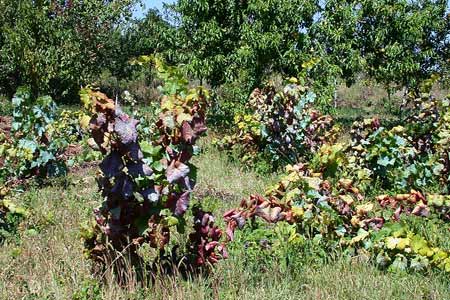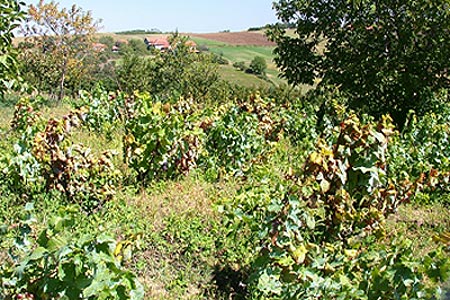|
According to anamnestic data collected during field trip to villages Tuleš, Rudenice, Vitkovo, Stubal, Drenča, Novaci, Dašnica, Rataj, Vratari and Bobote, including around 2000 individual households, appearance of disease on grapevine with symptoms typical for Flavescence dorée (FD) was first time registered and reported to local authorities in 1990. In this region, over 800 ha of vineyards were destroyed during past 15 years. Primary economic loses estimated in investment expenses reached 3,2 million euros. Secondary loses manifested in decreased production of vines and grape multiply overpass this amount. |
||
|
Presence and appearance of FD in region Zupa Aleksandrovac have all attributes of epidemic. In several inspected vineyards, percent of infected plants registered was 10-25% in 6 year old vineyards, while in older vineyards up to 100%. Estimation of phytosanitary situation is based on visible symptoms, which are present in second or third year after initial infection. Presence of numerous populations of Scaphoideus titanus is registered in whole region. |
||
|
We emphasize that FD is most probably present in region of Velika Drenova, what dramatically endangers production of grapevine planting material, or even worse, indicates possible spread of phytoplasma and its vector on wider territory in Serbia. |
||
 |
||
|
Village Tuleš, south east slope: vineyard with 100% infected vines. |
||
 |
||
|
Village Tuleš, south east slope: vineyard with 100% infected vines. |
||
 |
||
|
Village Tuleš, south east slope: vineyard with 100% infected vines. |
||
|
Department of Plant Pests, Institute for Plant Protection and Environment Belgrade Banatska 33, Zemun, tel/fax: 011 2611 762, E-mail: titanus_serbia@hotmail.com |
||
|
|
||
|
|
||